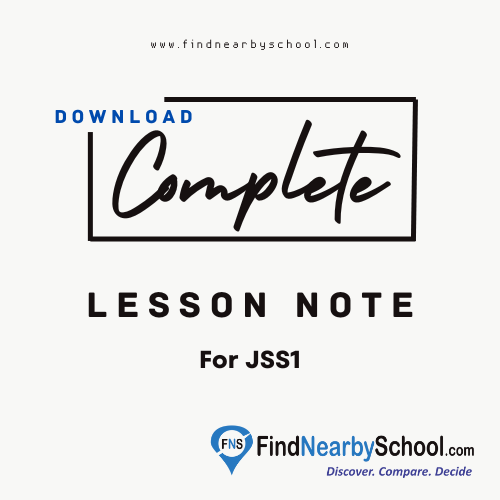Description
JSS1 Cultural and Creative Arts Scheme of Work for First, Second and Third Term: These lesson notes cover the following topics.
First Term:
1. Introduction of Cultural and Creative Arts
2. Introduction to Art
3. Teamwork and Sense of Belonging
4. Principles and Elements of Art and Design
5. Drama and Theatre.
6. Modeling with Papier Mache
7. Dance.
8. Forms and Types of Drama
9. Rudiments of Music
10. Theory of Music
11. Fundamentals and Elements of Music
12. Revision
13. Examination
REFERENCE TEXTBOOKS
• Cultural and Creative Arts (New Edition) by Peter Akinyemi& Co-Authors. (Book 1)
• Cultural and Creative Arts (New Edition) by Peter Akinyemi& Co-Authors. (Book 2)
• Cultural and Creative Arts (New Edition) by Peter Akinyemi& Co-Authors. (Book 3)
Second Term:
1. Revision of work done in first term.
2. Introduction to Local Craft – Basic Concepts: (a) Definition of local craft (b) Types of materials for making craft. (c) Tools and Equipment for making local craft: (i) Paper work (ii) Tie dye (iii) Batiks (iv) Basketry. (d) Crafts and Localities: (i) Blacksmithing – Awka, Lokoja. (ii) Weaving – Akwete, Oyo, Abeokuta, Okene, Tiv. (iii) Scupture – Oyo, Benin (iv) Dyeing – Maiduguri, Lagos, Abeokuta. (v) Leather work: Kano, Sokoto. (vi) Bread work: Nasarawa, Benin, Ekiti, Bida. (Animal horn: Sokoto, Bauchi, Borno, Kano.
3. Introduction to Tie and Dye: (a) Meaning. (b) Types of Tie and Dye Design: tying, folding, clamping. (c) Materials and tools for Tie and Dye. Fabric-Medium, Dyes – Colouring, Chemical-fixers, Plastic basins-bath, Spatula-turning, Glove for protection, Twine for tieing, (d) Making of designs and furnishing process.
4. Modeling: Production of Models with Paper: (a) Meaning of paper mash (b) Materials and tools for making paper mash (c) Method of Making Paper mash (d) Uses.
5. Making of Models with Paper folding technique: (a) Meaning of paper folding technique (2) Materials and tools for paper folding technique (c) Method of paper folding (d) Uses of paper models.
6. Production of Beads: (a) Definition of beads (b) Production of beads: (i) Roll paper beads (ii) Straw beads (iii) Seed d. Bottle (iv) bottle tops/cover beads. (c) Uses of beads.
7. Production of Collage Using paper: (a) Making of paper cpllage (b) Uses of paper collage.
8. Mosaics: (a) Meaning of mosaics (b) Materials and tools in making mosaics – different objects like broken bottle. Broken beads, seuins. – pen, pliers, knife, paint brush, scissors, Newspaper, Ruler, Paper different colour, Glue.
9. Mosaics: (c) Uses of mosaics – jewelry, Flower vase, Greeting cards, Masks, Wall decorations, (d) Mosaics project, e.g. necklace pendant wall decoration.
10. Revision.
11. Examination.
Third Term:
1. COSTUME IN DRAMA
2. MOSAIC
3. THEORIES OF MUSIC
4. INTRODUCTION TO CHOREOGRAPHY
5. MAKE -UP IN DRAMA
6. CONSEQUENCES OF USING FAKE AND ADULTERATED GOODS
7. CONSEQUENCES OF USING FAKE AND ADULTERATED GOODS
8. BEAD WORKS
9. AFRICAN MUSICAL INSTRUMENTS
10. TIE – DYE
11. REVISION
REFERENCE TEXTBOOK
A proper approach to cultural and creative art (new edition) book 1
PROJECTS
• Create a picture of a fish in mosaic using bits of granite ,coloured stones in bits and other media.
• Make a beaded vase using beads of reasonable size, thick fishing line and other tools.



Reviews
There are no reviews yet.